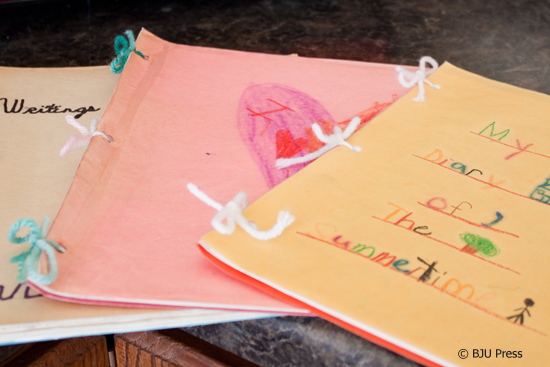
Children love building tall towers. Their goals can be quite lofty (literally) and sometimes others are enlisted to complete the project. At some point, the simple tower always seems to come crashing down. For an unsuspecting child, his response to the fallen tower is often tears or outbursts of frustration. But a “demolished” tower made from building blocks can easily be rebuilt.
When it comes to your children’s education, the process of building their tower of success is more intricate and complex. It requires establishing a solid foundation before adding more levels of learning. Their future is at stake, and that’s not something to play around with.
One subject that affects your children’s educational success “tower” is their mastery of the English language. It plays a key role in preparing them to communicate clearly through their academic papers and projects now as well as for their meeting presentations in the future.
Did you know that all our BJU Press elementary English textbooks have been written with those goals in mind? Each textbook presents the parts of speech in a similar chapter order and includes alternating chapters on writing to provide immediate application. Every grade level also adds a more detailed explanation so that your children understand foundational concepts before their knowledge is increased.
- Sentences are defined as expressing complete thoughts in English 2. This concept is then used to help students identify and properly use the parts of speech. By the time your child enters sixth grade, his grasp of the English language should allow him to form compound and complex sentences.
- Nouns may be the easiest part of speech to understand in comparison to the others largely because they relate to what children are already familiar with—people, places, and things.
- Verbs come next. They add another layer of understanding by showing action. Other types of verbs such as helping and linking also receive special attention in a separate chapter.
- Pronouns are gradually introduced in English 2 to make sure students can distinguish between a noun and a pronoun. English 3 through English 6 include a separate chapter just for this part of speech.
- Adjectives are explained in English 2 by relating them to the five senses—how things look, smell, sound, taste, and feel. Specific types of adjectives are included in later grades.
- Adverbs come in English 3 where they are compared with adjectives. This pairing of the two parts of speech continues all the way through English 6.
- Conjunctions appear in English 3. The role of this part of speech is outlined more thoroughly as your child learns to write compound sentences.
- Prepositions are first presented in English 4 after the nouns and pronouns are clearly defined. They are connected with learning about phrases.
Children try to build their towers so that they reach the ceiling, and all of us at BJU Press want your childen to reach their full potential when it comes to using the English language.
Check out the “Look Inside the Book” feature for our elementary English products.
 My teacher friend Mary Beth invited me to come visit her kindergarten classroom. She had been reading aloud one the children’s books I wrote, and her students were ready for the last two chapters. “We thought it would be neat if you could come and finish the book for us,” she said. “My students would enjoy meeting a real live author.”
My teacher friend Mary Beth invited me to come visit her kindergarten classroom. She had been reading aloud one the children’s books I wrote, and her students were ready for the last two chapters. “We thought it would be neat if you could come and finish the book for us,” she said. “My students would enjoy meeting a real live author.”